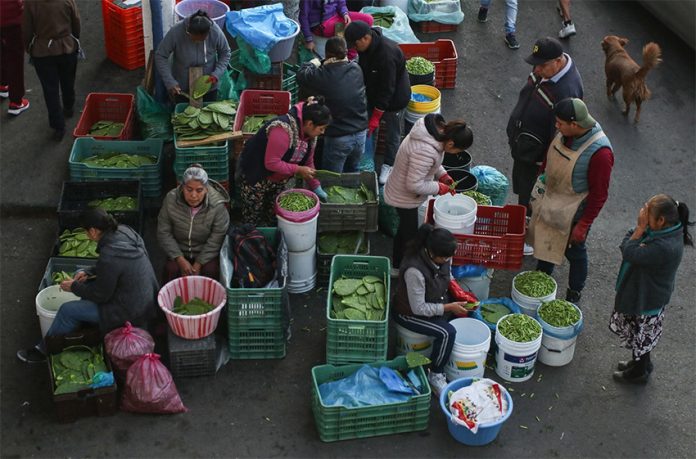The number of people with jobs in Mexico declined by well over 800,000 in June compared to the previous month, representing a 0.2 percentage point increase in the unemployment rate, according to national statistics agency INEGI.
The vast majority of those who lost or left jobs were women, as net employment for men actually increased in June compared to May. Employment declined in each of the three main sectors of the economy: primary, secondary and tertiary.
INEGI data also shows that the rate of unemployment in Mexico increased to 2.8% in June, up from 2.6% in April and May.
The statistics agency reported Friday that Mexico’s labor force was made up of just under 58.95 million people in June, down from 59.81 million people in May.
In other words, 863,862 fewer people had jobs in June than in the previous month. It was the largest month-over-month decline in employment since November 2023, when the Mexican labor force shrank by 1.2 million people.
The number of women in work declined by 869,600 in June, while the number of men with jobs increased by 5,738.

INEGI data also shows that the economically active population (PEA) — people in work or looking for work — declined by 791,700 in June to 60.63 million.
The number of unemployed people increased by 72,162 to 1.68 million.
Gabriela Siller, director of economic analysis at Banco Base, noted that the PEA declined “significantly” in June compared to the previous month.
She said that the reason why almost 800,000 people left the labor market completely was unclear. However, the analyst said the reduction could be related to the end of the electoral process in Mexico, during which the National Electoral Institute and political parties employ a large number of additional people, including retirees.

Siller also said that the government’s cash transfer programs disincentivize labor force participation among some sectors of the people, which could also help explain the decline in the size of the PEA.
For her part, Monex’s director of economic analysis Janneth Quiroz said that the decline in the size of the labor force in June was partially explained by the economic slowdown in Mexico this year.
“In addition, all the temporary workers who participated in the electoral campaigns ended their contracts in June,” she said.
January-May gains wiped out in June
Mexico’s labor force increased by 667,433 people between January and May, but those gains were completely erased by the decline in jobs in June.
In fact, 196,429 fewer people were in employment in June than in December 2023. The reduction in the size of the workforce by more than 860,000 people was the biggest decline for the month of June since comparable records were first kept in 2005.

In an encouraging sign, analysts at Banorte don’t believe that the decline in the labor force in June is the beginning of a trend. They think that the labor force will grow in coming months, in part due to hiring related to nearshoring investment.
However, Siller believes that the labor market will remain weak in coming months due to an even greater economic slowdown.
Most job losses were in the informal sector
The informal sector accounted for just over 96% of the overall decline in the size of Mexico’s labor force in June. The formal sector workforce shrank by 33,471 positions in June, accounting for 3.8% of the total decline.
INEGI reported that 31.7 million people were working in the informal sector in June, a figure that accounts for 53.8% of the labor force.
Unemployment in Mexico hits highest level since January
The 2.8% unemployment rate in June was the highest since January, when 2.9% of the PEA was jobless. The rate is 0.1 points higher than it was 12 months earlier.
The total number of unemployed people rose for a third consecutive month in June, marking the longest stretch of increases since 2022.
Formal job creation declines 40% annually this year
Separate data published by the Mexican Social Security Institute (IMSS) on Monday shows that Mexico’s formal sector workforce increased by 307,402 people between January and July.
The figure is 40% lower than the 512,243 formal sector positions added in the same period of last year.
INEGI also reported that the overall size of the formal sector labor force has increased 2% over the past 12 months to reach 22.3 million people. The majority of those people — 86.6% — are in permanent jobs while the remainder hold temporary positions.

The sectors that have recorded the biggest increases in the size of their workforces over the past year are transport and communications, retail, and construction, IMSS said.
How much do formal sector workers earn on average in Mexico?
IMSS reported that the average base salary of formal sector workers was 588.7 pesos (US $30.50) per day at the end of July. The average formal sector salary is up 9.7% compared to a year earlier.
The minimum wage in most of Mexico is 248.93 pesos per day, meaning that formal sector workers earn, on average, around 2.4 times the minimum.
With reports from El Financiero, El Economista, Expansión and La Jornada
